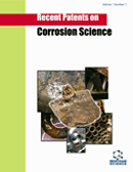Abstract
Graphene-based materials (GMs) are the most promising materials in this
era of antimicrobial and antiviral materials. Their excellent physicochemical properties
and biocompatibility have opened new doors in this field. Graphene has good
mechanical properties, a large surface area, high barrier mobility, excellent electronic
transport performance, and resistance to degradation. Antimicrobial and antiviral
materials have been used in the health sector for many years to fight off pathogens.
Antibiotics, metal ions, and quaternary ammonium hydroxide are used for bacteria,
while metals and organic materials are effective against viruses. Although metals are
effective against viruses, their toxicity, high cost, and unintended leaching restrict their
use as antivirals. Viral strains are progressively mutating, emerging as new threats to
our species' survival. Bacterial resistance has developed as a result of the excessive use
of antibiotics. The antimicrobial materials used so far have a high cost, cause
environmental pollution, and are complex to process. To overcome these challenges,
graphene-based materials have been in the limelight for antiviral and antibacterial
abilities against pathogens. The combined properties of graphene alongside metals,
polymers, metal oxides, and many other materials enable the perfect tool to protect
human health. Their efficacy and broad-spectrum activities against gram-positive and
gram-negative bacteria can potentially improve the quality of life. This chapter
examines the detailed application of graphene-based materials towards wound healing,
antibacterial coatings, biosensors, bioimaging, antibacterial sutures, anti-bio films,
photocatalytic degradation of bacteria, and antibacterial packaging.






















